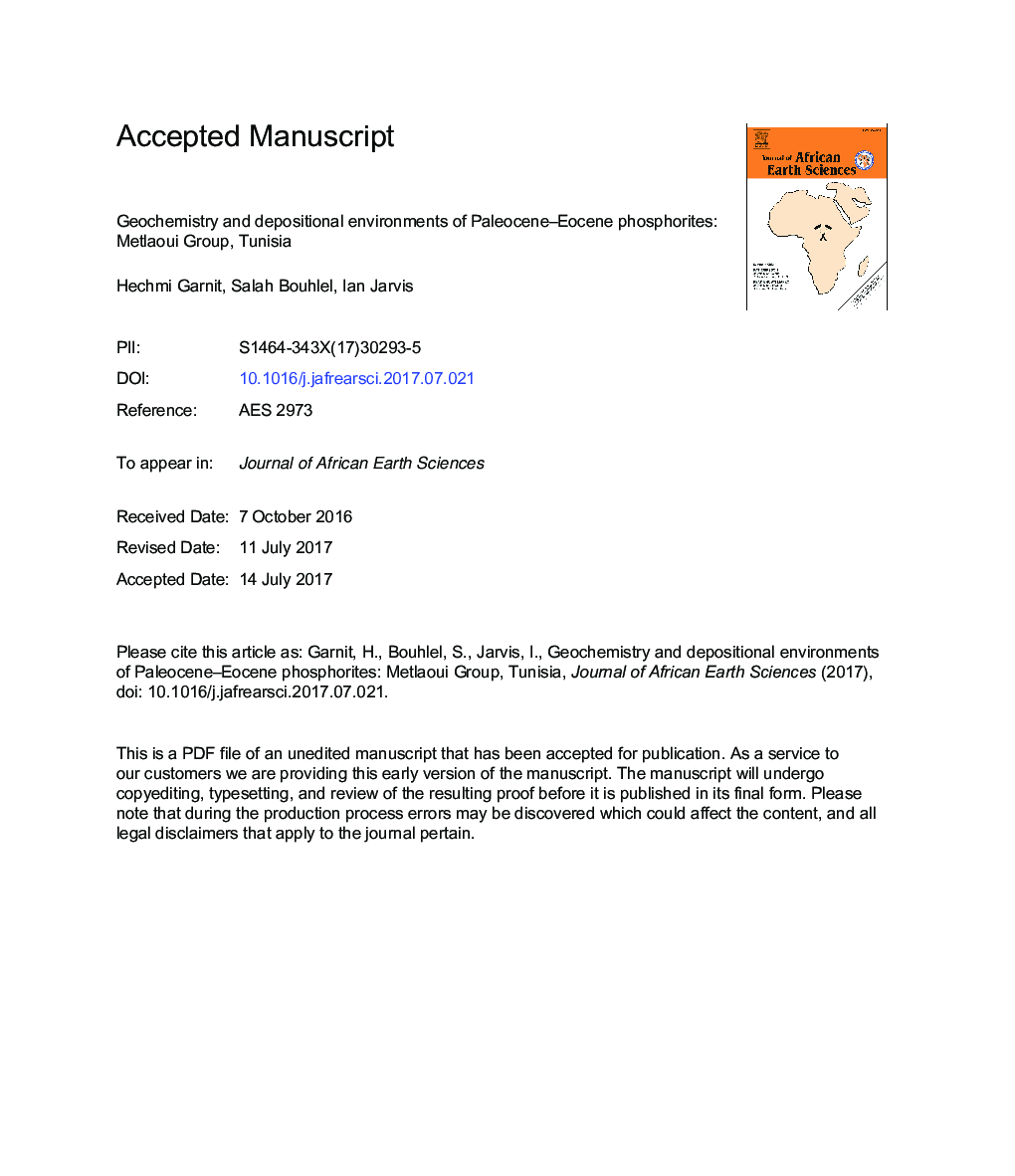| کد مقاله | کد نشریه | سال انتشار | مقاله انگلیسی | نسخه تمام متن |
|---|---|---|---|---|
| 5785593 | 1640174 | 2017 | 98 صفحه PDF | دانلود رایگان |
عنوان انگلیسی مقاله ISI
Geochemistry and depositional environments of Paleocene-Eocene phosphorites: Metlaoui Group, Tunisia
ترجمه فارسی عنوان
ژئوشیمی و محیط رسوبی فسفاتهای پالئوسن ائوسن: گروه متلاوی، تونس
دانلود مقاله + سفارش ترجمه
دانلود مقاله ISI انگلیسی
رایگان برای ایرانیان
کلمات کلیدی
موضوعات مرتبط
مهندسی و علوم پایه
علوم زمین و سیارات
زمین شناسی
چکیده انگلیسی
The Late Paleocene-Early Eocene phosphorites of the Metlaoui Group in Tunisia are a world-class phosphate resource. We review the characteristics of phosphorites deposited in three areas: the Northern Basins; Eastern Basins; and Gafsa-Metlaoui Basin. Comprehensive new bulk rock elemental data are presented, together with complementary mineralogical and mineral chemical results. Carbonate fluorapatite (francolite) constitutes the dominant mineral phase in the deposits. Phosphorite samples are enriched in Cd, Sr, U, rare-earth elements and Y, together with environmentally diagnostic trace elements that provide detrital (Cr, Zr), productivity (Cu, Ni, Zn) and redox (Mo, V) proxies. Suboxic bottom-water conditions predominated, with suboxic to anoxic porewaters accompanying francolite precipitation. Phosphorite deposition occurred under increasingly arid climate conditions, accompanying global Paleocene-Eocene warming. The Northern Basins show the strongest Tethys Ocean influence, with surface seawater rare-earth element signatures consistently developed in the phosphorites. Bed-scale compositional variation indicates relatively unstable environmental conditions and episodes of sediment redeposition, with varying detrital supply and a relatively wet local climate. Glauconitic facies in the Northern Basins and the more isolated evaporite-associated phosphorites in the dryer Eastern Basins display the greatest diagenetic influences. The phosphorite - organic-rich marl - diatom-bearing porcelanite facies association in the Gafsa-Metlaoui Basin represents the classic coastal upwelling trinity. Modified Tethyan waters occurred within the Basin during phosphorite deposition, with decreasing marine productivity from NW to SE evidenced by systematically falling enrichment factors for Cu, Ni, Cd and Zn in the phosphorites. Productivity declined in concert with increasing basin isolation during the deposition of the commercial phosphorite beds in the latest Paleocene to earliest Eocene. This isolation trend was temporarily reversed during an episode of maximum flooding associated with the earliest Eocene Paleocene-Eocene Thermal Maximum (PETM).
ناشر
Database: Elsevier - ScienceDirect (ساینس دایرکت)
Journal: Journal of African Earth Sciences - Volume 134, October 2017, Pages 704-736
Journal: Journal of African Earth Sciences - Volume 134, October 2017, Pages 704-736
نویسندگان
Hechmi Garnit, Salah Bouhlel, Ian Jarvis,
